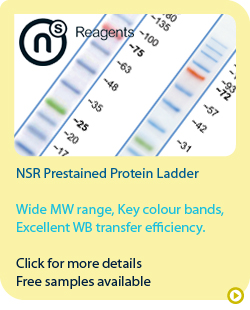NEWS: Confidently measure mature BDNF levels
|
Brain-derived neurotrophic factor (BDNF) belongs to the neurotrophin family of growth factors. It plays essential roles in the central nervous system and is known to regulate and support the growth, survival and differentiation of neurons.
Brain insults or stress cause variations in the BDNF levels, which may contribute to depressive or neurological disorders such as epilepsy and Alzheimer’s disease.
To help scientists quantify BDNF in their studies and clinical trials, Biosensis have developed a robust ELISA kit that detects mature BDNF with high specificity.
The assay can be performed conveniently in less than 3 hours without losing accuracy, sensitivity and reproducibility. Watch the video below to see how easy the kit is to use.
Key features of the Biosensis mature BDNF RapidTM ELISA kit (BEK-22111P/2P):
- Measure BDNF in serum, cell culture supernatants and brain extracts in under 3 hours - Minimal cross-reactivity with proBDNF - Quantify BDNF in Human/Mouse/Rat samples with a WHO approved BDNF standard - High sensitivity gives you the advantage of using small sample volumes - Our kits contain pre-coated 96 well strip plates - use only what you need. - Also available CE marked (BEK-2211-1P-CE/BEK-2211-2P-CE).
Analysis of two human serum samples with the Biosensis mature BDNF ELISA kit. (A) Reliable results across a wide dilution range and (B) with high confidence.
Check out the full range of BDNF ELISA kits and antibodies: BDNF, proBDNF and mature BDNF ELISA kits, BDNF antibodies or watch our video on the use of the mature BDNF kit.
Questions? For more information email us at tech@nktscientific.com.
References: Polacchini, A., Metelli, G., Francavilla, R. et al. A method for reproducible measurements of serum BDNF: comparison of the performance of six commercial assays. Sci Rep 5, 17989 (2015). https://doi.org/10.1038/srep17989. https://www.nature.com/articles/srep17989
|






